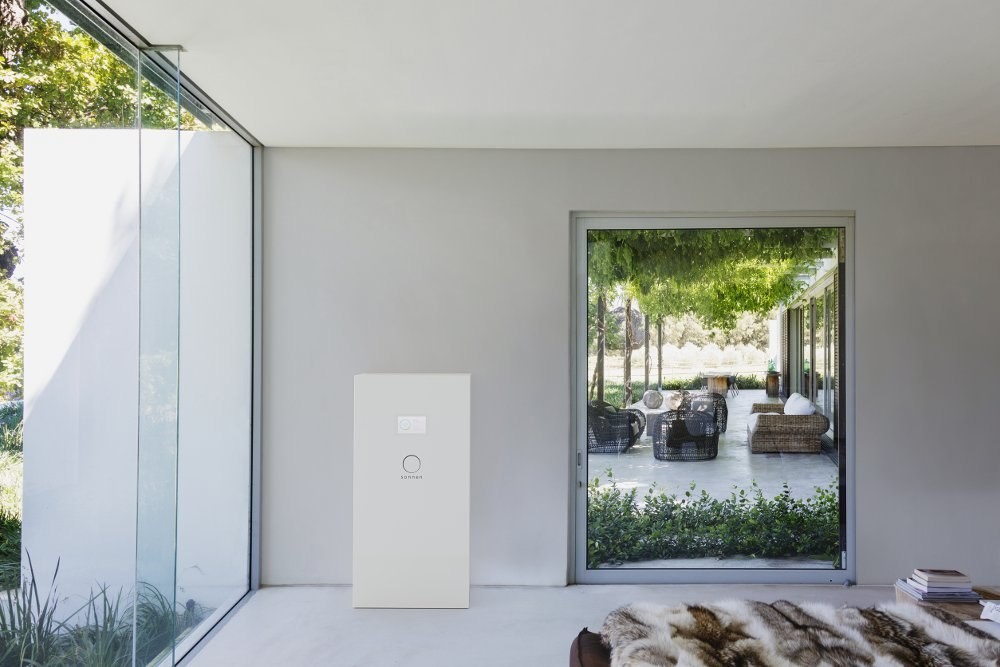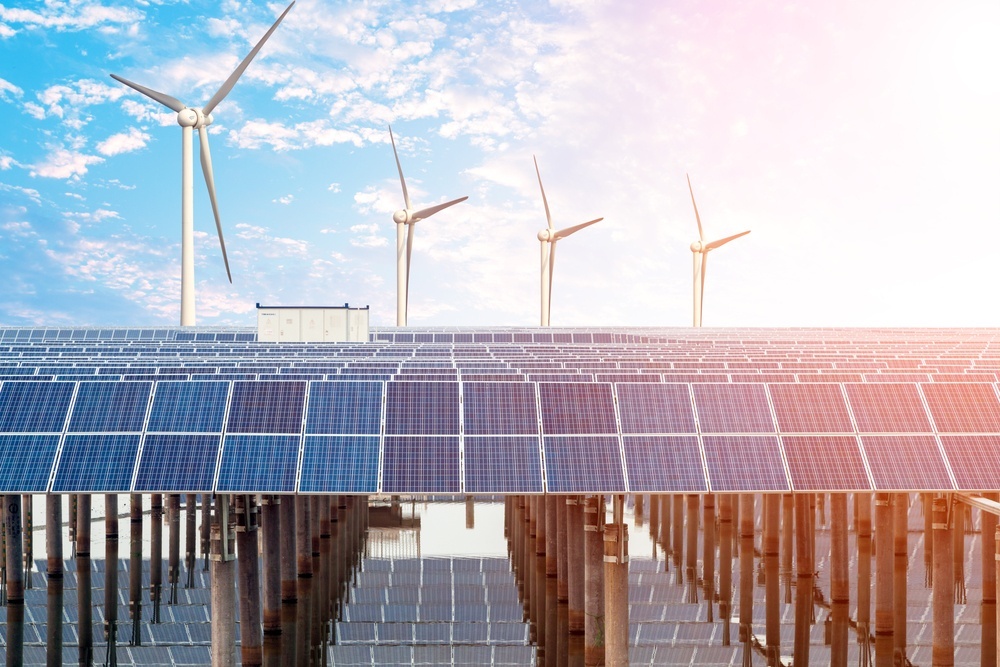As Solar.com expands its online solar marketplace to include more consumer technologies such as home energy storage, EV charging and more, we are reaching out to industry leaders to share insights on how the distributed energy economy is evolving.
First up is Michelle Mapel, Marketing Director for Sonnen Inc. Sonnen is the global leader in smart residential energy storage with over 16,000 systems installed worldwide. sonnenBatterie technology incorporates both a hardware and software platform that serves as a micro-grid, enabling homeowners to store solar energy for later-use and receive financial compensation from local utilities that pull excess energy from sonnenBatteries when needed.
 |
 |
| Head of Business Development
Kyle Cherrick
|
Director of Marketing
Michelle Mapel
|
Kyle Cherrick: Thanks for joining us, Michelle. First, could you share a bit more about how Sonnen got its start in energy storage and when your team entered the US market?
Michelle Mapel: Sonnen was founded in 2010 in Germany, when our founders, Torsten Stiefenhofer and Christoph Ostermann, realized the immense opportunity that existed by adding storage to increase efficiency and saving for existing clean energy generation systems, resulting in more potential for a green energy future.
At the time, solar supplied a sizeable Feed-in-Tariff (FIT) for customers, which led to the installation and generation of large amounts of solar in Germany. However, as the FIT price dropped, it became increasingly clear that there was a need for technology that could store that excess solar and perpetuate the use of clean energy after the sunset. As a result, Torsten and Christoph introduced the first sonnenBatterie product in 2011, and it was incredibly well-received. Since emerging as the market leader in Germany and Austria, Sonnen has expanded globally into the U.S., the U.K., Italy, and Australia. Sonnen first entered the US market in 2015 and officially opened our US headquarters in Los Angeles in January 2016. We also just recently announced that in Q2 2017 we’ll be opening a centralized InnovationHub, which combines our U.S. R&D and manufacturing teams in Atlanta, GA.
KC: What are the main components of a home energy storage system, and how are they generally integrated into the home?
MM: The components of a home energy storage system can vary depending on the company producing the system. Typically, a back-up/self-consumption system will have a battery inverter, batteries, PV array with either a PV inverter (AC coupled) or a charge controller (DC coupled), interconnection wiring, as well as a balance of system components like disconnects, relays, bypass switches, etc.
The beauty of the sonnenBatterie is simplicity. Most of the required components are fully integrated into one sonnenBatterie box, significantly reducing the installation time. As for integration into the home, the sonnenBatterie is a behind-the-meter storage system and therefore will be connected both to the home PV system and to the grid.
KC: How have the costs of those components changed over the past five years, and what is expected to happen to costs in the next five?
MM: So far, energy storage seems to follow a similar trend as photovoltaic systems. With the rising demand and increasing adoption of solar storage, we’ve seen a natural decline in the cost of storage components. Energy storage has become more affordable than ever before – especially as the cost of lithium-ion batteries has dropped by about 70 percent over the past two years.
As solar storage and electric vehicles become more popular, we expect costs to continue declining as the production scale rises. New and existing state-based renewable energy goals and energy storage financing incentives will also help solar storage reach economies of scale and become a greater portion of the consumer market. Many utilities across the country also have storage procurement projects in place, which will increase installations of storage to stabilize renewable energy generation and mitigate power outages.
Customer demand is also being driven by ongoing changes in solar incentives and net metering, as well as uncertainty about potential increases in utility tariff rates. Many customers view energy storage systems, like the sonnenBatterie, as a means to maximize the value of their solar investments and a way to future-proof themselves against rising utility costs.
KC: In the solar industry, we’ve seen a long list of federal, state and local incentives to kickstart the industry. Are similar incentives available to homeowners to help offset the cost of these systems?
MM: Yes, energy storage incentives exist. Many of the incentives offered to solar energy have been expanded to include storage systems, too. Just recently, the Federal Solar Investment Tax Credit (ITC), a 30% federal tax credit on solar technologies, was extended to 2019 and applies to both solar energy generation and solar storage.
But the availability of allocated funds varies at the state level. For example, California passed four bills last September to support solar storage in the state. The largest of the four expanded funds allocated to the California Public Utilities Commission’s Self-Generation Incentive program (SGIP) and required that 15 percent of total funds allocated go to residential solar storage – which makes up about $30 million for California homeowners.
Another example is the Hawaii Energy Tax Credit, which allows solar customers to claim a 35 percent income tax credit for the cost of equipment and installation. Moreover, in New York, Affordable Solar, part of New York State Energy Research and Development Authority’s NY-Sun Program, provides additional incentives to help lower the cost of installing solar for low-to-moderate-income homeowners.
In addition to the three leading energy storage markets: California, Hawaii, and New York, many other developing markets show solid and growing demand for energy storage. New Jersey, Washington, and Massachusetts are just a few examples of cities emerging as key growth markets as they begin to implement energy storage incentives.
Along with state and federal funding mechanisms, there are also a variety of increasingly popular financing programs. For instance, homeowners can lease their solar system or sign power purchase agreements (PPAs) in which the state buys back the excess energy stored on your home solar storage device. Other financing programs include HERO, under the U.S. government’s property assessed clean energy (PACE) financing scheme, which allows homeowners to finance their storage system through their property tax bill, thereby reducing the amount of interest that needs to be paid. Consumer financing platforms like Greensky and Mosaic have also emerged to help homeowners pay for their new solar plus storage systems.
KC: What are the primary reasons that a homeowner would purchase a home energy storage system? Is it just for back-up power or are there additional uses?
MM: Energy storage systems provide numerous benefits to homeowners. Although back-up power is one of the more common reasons homeowners invest in home energy storage in the U.S. right now, there are state policies and cultural trends that are driving the market in new directions.
First, storage is a key addition to PV systems as it maximizes the usage and effectiveness of home solar systems. Most homeowners do not consume all the solar energy they produce as people aren’t home during the middle of the day when the sun is at its peak. Instead, they return between 4-7pm, after the sun has set and when many states charge peak rates due to high demand for energy. That means that even homeowners with solar still pay these expensive peak energy rates. But with storage, they save that extra energy for later use, maximizing the benefits homeowners receive from their solar system.
In fact, the sonnenBatterie’s smart storage software will track peak pricing periods and switch to battery-supplied power to help homeowners avoid higher rates. The sonnenBatterie also helps homeowners save money by storing energy and refraining from tapping the grid at peak hours, homeowners increase their energy independence and reduce their monthly utility bill.
There’s also a group of early adopters and homeowners who want greater energy independence. Solar plus storage is the future of renewable energy in the United States, and many homeowners are excited to be at the forefront of that energy revolution. This sentiment also coincides with the net-zero home energy movement, which is becoming more popular as states like California adopt mandates for residential net-zero homes by 2020.
KC: We’ve heard of energy storage systems being part of a “Virtual Utility,” what is that and when do we think those may start being developed here in the US?
MM: Solar storage systems represent a new way for utilities to meet consumer demand cleanly, efficiently and affordable. Sonnen’s partnerships with companies that specialize in grid service management – such as Energyhub, Enbala, and AutoGrid – will provide the technology required to intelligently manage distributed energy resources, namely grid-tied sonnenBatterie systems.
These partnerships allow us to unlock new revenue streams for customers, utilities, energy project developers and energy managers, by aggregating our distributed energy storage systems, withdrawing power from these solar devices as needed and paying homeowners for the energy withdrawn.
Aggregated solar storage is truly a win-win solution with a two-fold goal – to serve as a virtual power plant, but also as a means to improve grid reliability without heavy infrastructure investments.
KC: What’s the likelihood that we’ll really use storage as a virtual power plant in the U.S.? Is that a realistic vision for the future of clean energy?
Virtual utility systems actually already exist. For instance, we recently worked with Green Mountain Power in Vermont to curtail peak demand by investing in distributed energy storage and ultimately created the first net-zero, low-income rental housing development in the country.
In Germany, Sonnen has already established the SonnenCommunity, in which homeowners share electricity with Community users, or sell excess energy back to utilities. Sonnen is constantly innovating and evolving our products and services and we plan to bring a modified version of the sonnenCommunity to the U.S. market in 2017.

A Sonnen Eco Battery for home energy storage
KC: In the future, do you expect an energy storage system to be included as standard equipment in every solar energy system?
MM: Solar plus storage is a complete, complementary package that allows homeowners to produce the energy needed with minimal dependence on the grid. With a solar storage solution, homeowners will have insurance against grid failure, while being protected against rising utility rates. In many states, adding storage to solar is a prudent choice to protect solar customers from changing net-metering programs. Furthermore, as utilities integrate energy resources from solar with storage into their grid planning, energy storage will become a key to stabilizing the grid, providing generation resources and reducing demand for expensive peak energy.
KC: How does storage come into play if a consumer drives an electric vehicle? Does it make any difference?
MM: Home energy storage can easily be used in tandem with electric vehicles. Depending on where you choose to charge your car, the sonnenBatterie can dramatically offset the costs of charging. For example, if a consumer is trying to charge their car when they get home from work, they will see a huge spike in energy usage during peak pricing, which gets very expensive, very quickly. But with energy storage, the car consumes energy straight from the sonnenBatterie. Plus, the added battery storage provides extra security if the power goes down and a homeowner wants to charge his or her car.
Storage is an integral part of the complete residential energy package. Similar to early adopters investing in solar and storage, those who purchase electric cars see themselves at the forefront of the energy market – that’s the niche market of eco-friendly trend-setters that Sonnen caters to.
KC: How much energy storage do homeowners need? Do you typically power a whole home with energy storage? For how long?
MM: It really depends on what the homeowner is looking for. Correctly sizing the system to fit customer needs is the key to energy storage. As you know, certain devices require significantly more power than others, which will determine which size battery – out of our seven different unit sizes – is needed. In the past, we’ve seen homeowners use the sonnenBatterie to backup everything from refrigerators and lights to good pumps and water dispensers. We had one Florida customer use two sonnenBatterie eco 10kWh systems to fully protect his home and livestock before the grid went down during Hurricane Hermine.
Excluding these more extreme cases, the average homeowner is usually looking for a means to backup essentials like their refrigerator, lights and garage door opener with enough stored energy remaining to charge cell-phones and laptops. We also often recommend that homeowners get a size larger than they initially think they’ll need, so they have room to add on additional PV or other renewable energy systems. To help users decide, we also provide a sizing software tool to our installation partners so they can easily calculate the best sized sonnenBatterie system customized for the end user’s need.
KC: What makes a Sonnen battery different from any other? Why do customers choose you?
MM: Many new solar storage product designs are already on the market and more will come. We’re unique because we’re the only tried and tested model in the market with over 16,000 installations worldwide. Other companies talk about how many products they’ve sold – but that doesn’t mean they’re ultimately being installed or used. Sonnen is actively selling and installing storage systems through our distribution partners around the globe.
The energy storage market is young and many “experts” typically have two or three years of experience. At Sonnen, our experience of more than six years gives us a competitive advantage and provides our customers confidence in a long-lasting, quality product. As such, we offer one of the longest product warranties in the market at 10 years or 10,000 cycles, which gives Sonnen the lowest cost per battery cycle of an energy storage system. Furthermore, our system is all-inclusive and fits into one box, storage inverter and all.
But what’s most important in differentiating Sonnen from our competition is that we take pride in using the highest quality and safest components – our top-rated Sony batteries, combined with our smart energy management software and the fully integrated all-in-one system, streamlines the installation process and reduces costs for homeowners. Plus it looks very stylish and can be installed in any room.
Moreover, we’re partner agnostic, so we’re constantly researching and exploring ways to improve our product and stay ahead of the competition.
Homeowners interested in adding solar and/or energy storage to their residence can visit www.Solar.com where a dedicated account manager will answer questions, size and design a solar or storage system, and collect 6-12 bids from pre-vetted local installers for your project. With Solar.com, homeowners typically save over $4,000 when compared to going solar on their own.


 human induced climate change. Climate change is causing worldwide drought, crop failure, famine, increasing natural disasters such as earthquakes and floods, and rising health risks in children and adults due to air pollution and water contamination. If we continue to exploit fossil fuels and release toxic emissions we will continue to see the harmful results to our health and planet.
human induced climate change. Climate change is causing worldwide drought, crop failure, famine, increasing natural disasters such as earthquakes and floods, and rising health risks in children and adults due to air pollution and water contamination. If we continue to exploit fossil fuels and release toxic emissions we will continue to see the harmful results to our health and planet.




